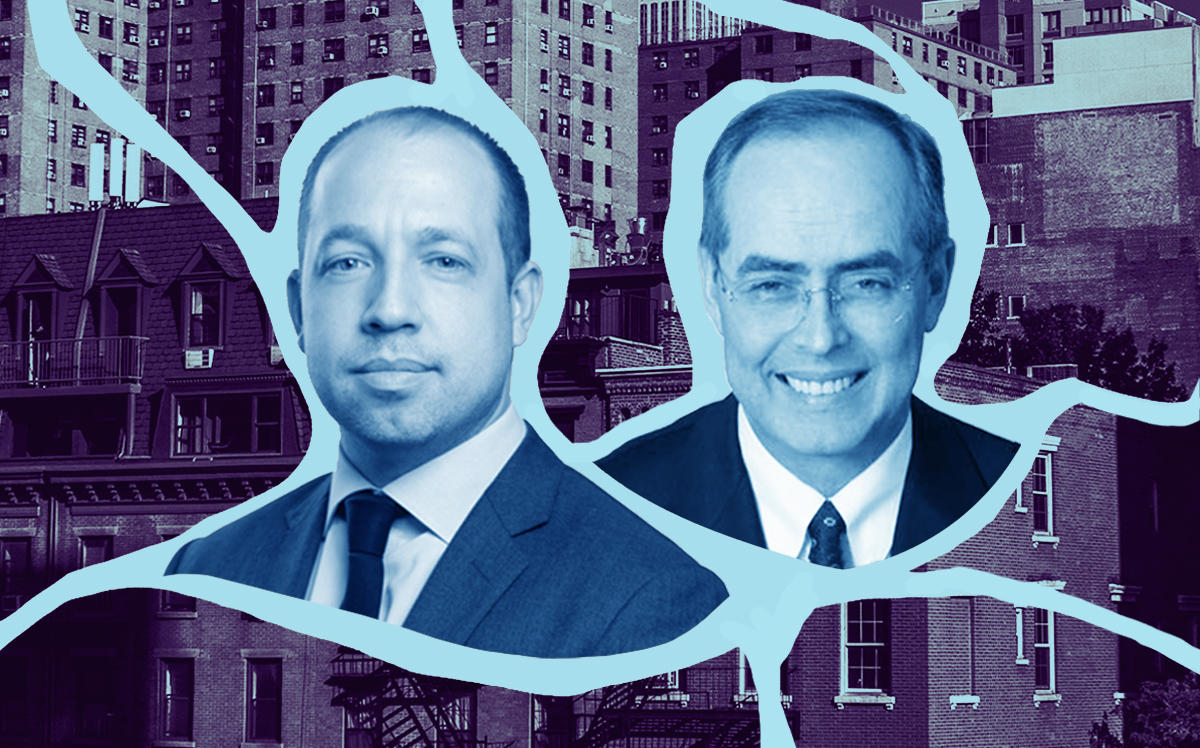Two firms are offering New York City a solution to a slew of affordable housing issues.
To make it work, Greystone and Lappin Associates need a property-tax break for rent-regulated housing.
Their plan would address two controversial elements of the rent-stabilization law passed last year: its severe limits on regulated rent increases to pay for improvements, and its elimination of means-testing, which lets even the wealthiest New Yorkers lease rent-stabilized units.
Greystone and Lappin hope to find Mayor Bill de Blasio receptive in the wake of his reluctantly cutting capital funding for about 21,000 affordable apartments, jeopardizing his goal of building or financing 300,000 such units.
In exchange for tax breaks on rent-stabilized housing, the developers would ink long-term agreements to restrict the income of incoming tenants. That would qualify those units to count toward de Blasio’s numerical target.
The city’s nearly 1 million rent-regulated apartments need work — and the city should make it happen, Lappin Associates founder Mike Lappin argued.
“The new rent law makes it very difficult to get money into buildings that need repairs,” said Lappin. “We don’t know the extent of the deterioration, but the fact is, these older buildings need a fair amount of care, and they need it consistently.”
By adding some rent-regulated properties to the mayor’s affordable-unit tally, the Lappin-Greystone proposal could also be one of the few remaining pathways for the mayor to reach his targets. The income restriction would qualify the units for more favorable financing through government-sponsored entities Fannie Mae and Freddie Mac.
Business plans that depended on renovating apartments to raise rents are now “upside down,” explained Drew Fletcher, president of Greystone Capital Advisors. Those landlords now need to refinance expensive debt in a less lenient lending environment. Fletcher hopes Greystone can fill the void with low-cost, senior, first-mortgage financing for assets with a federal loan guarantee — when combined with a city tax benefit.
“This housing stock is critical to New York City,” said Fletcher. “These apartments should be treated as if they are ‘capital A’ affordable properties — and if they were, we’d be able to take advantage of attractive underwriting criteria.”
His firm, which is one of the largest private multifamily lenders in the country, is already having “high-level conversations” with Fannie and Freddie to develop underwriting criteria, Fletcher said.
The proposal sounds like a lifeline for multifamily landlords who were still in shock over last year’s rent law change when the pandemic triggered a huge drop in rent collection. But the joint venture is also counting on at least some help from the city.
Privately, however, few affordable housing industry insiders believe the administration has any intention of hitting its numbers, which have a deadline of 2026 — five years after the mayor must leave office.
“They’re not going to make the targets, which they admitted by cutting 40 percent of the capital budget,” said one affordable housing executive. “Further constraining the revenues by extending more tax breaks to other housing stock may be tough for the city.”
Some champions of last year’s rent law are skeptical of the call to dedicate city resources to private landlords.
“What is maybe worth noting is that the landlords who are in the worst straits now likely refinanced a few years ago in order to do renovations, because that was the path to getting the buildings out of rent stabilization,” said Laura Wolf-Powers, an associate professor of urban planning at CUNY Hunter College. “So it’s particularly rich for them to be saying they need federal loan guarantees and city tax relief for renovations now.”
The mayor might also see little upside to layering an affordability agreement on top of rent stabilization’s regulatory framework, which already provides de facto affordable housing.
Unlike with the 5,000 Stuyvesant Town apartments protected from market-rate rents for 20 years under a 2016 agreement, deregulation isn’t on the table for rent-stabilized units. That means the city could make other demands, such as income restriction in those apartments, said Matthew Murphy, executive director of the Furman Center. And it probably wouldn’t have to pay as much for such agreements as it would have before.
“The city now has leverage it didn’t have before,” said Murphy. “If you compared a deal like this to [one] prior to the rent-law changes, the city would have paid more to keep those units affordable and deregulated.”
Murphy described the need for renovations as compelling. Even when regulated rents could be raised significantly to pay for improvements, the condition of rent-regulated apartments was worse than their market-rate counterparts. Now both unsophisticated smaller landlords and large corporate entities need to make renovations — and are on the hook for the bill.
“This all kind of comes down to the question of whether the city will absorb the cost of the rent-law changes,” said Murphy. “It’s a generational question: What is the local government’s role in using tax money to support those changes?”
